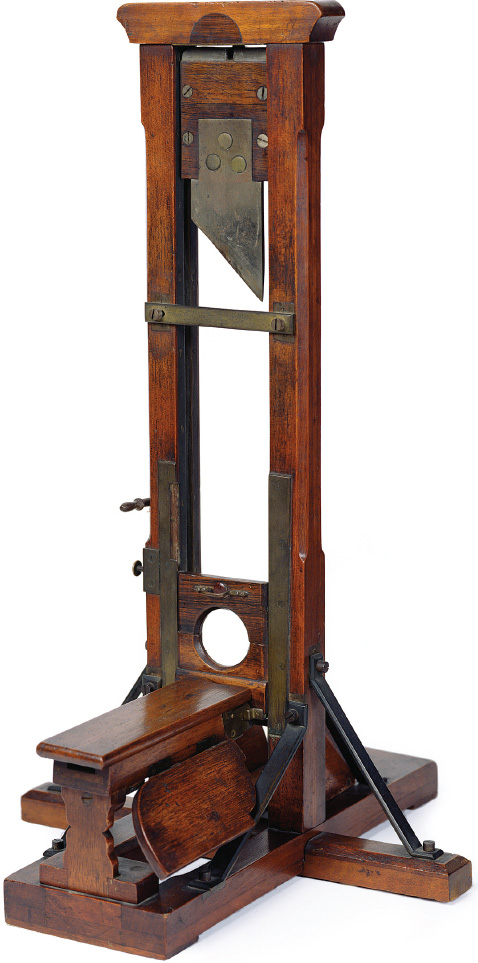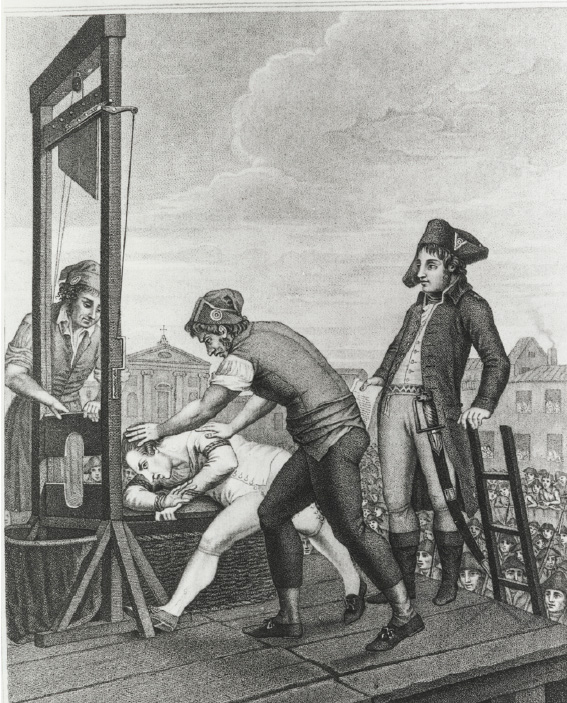Total War and the Terror
A year later, in July 1794, the central government had reasserted control over the provinces, and the Austrian Netherlands and the Rhineland were once again in French hands. This remarkable change of fortune was due to the revolutionary government’s success in harnessing the explosive forces of a planned economy, revolutionary terror, and modern nationalism in a total war effort.


Robespierre and the Committee of Public Safety advanced on several fronts in 1793 and 1794, seeking to impose republican unity across the nation. First, they collaborated with the sans-culottes, who continued pressing the common people’s case for fair prices and a moral economic order. Thus in September 1793 Robespierre and his coworkers established a planned economy with egalitarian social overtones. Rather than let supply and demand determine prices, the government set maximum prices for key products. Though the state was too weak to enforce all its price regulations, it did fix the price of bread in Paris at levels the poor could afford.
The people were also put to work, mainly producing arms and munitions for the war effort. The government told craftsmen what to produce, nationalized many small workshops, and requisitioned raw materials and grain. Through these economic reforms the second revolution produced an emergency form of socialism, which thoroughly frightened Europe’s propertied classes and greatly influenced the subsequent development of socialist ideology.
Second, while radical economic measures supplied the poor with bread and the armies with weapons, the Reign of Terror (1793–1794) enforced compliance with republican beliefs and practices. Special revolutionary courts responsible only to Robespierre’s Committee of Public Safety tried “enemies of the nation” for political crimes. Some forty thousand French men and women were executed or died in prison, making Robespierre’s Reign of Terror one of the most controversial phases of the Revolution. Presented as a necessary measure to save the republic, the Terror was a weapon directed against all suspected of opposing the revolutionary government. As Robespierre himself put it, “Terror is nothing more than prompt, severe inflexible justice.”4 For many Europeans of the time, however, the Reign of Terror represented a frightening perversion of the ideals of 1789.
In their efforts to impose unity, the Jacobins took actions to suppress women’s participation in political debate, which they perceived as disorderly and a distraction from women’s proper place in the home. On October 30, 1793, the National Convention declared that “the clubs and popular societies of women, under whatever denomination are prohibited.” Among those convicted of sedition was writer Olympe de Gouges, who was sent to the guillotine in November 1793.
The Terror also sought to bring the Revolution into all aspects of everyday life. The government sponsored revolutionary art and songs as well as a new series of secular festivals to celebrate republican virtue and patriotism. Moreover, the government attempted to rationalize French daily life by adopting the decimal system for weights and measures and a new calendar based on ten-day weeks. (See “Living in the Past: A Revolution of Culture and Daily Life.”) Another important element of this cultural revolution was the campaign of de-Christianization, which aimed to eliminate Catholic symbols and beliefs. Fearful of the hostility aroused in rural France, however, Robespierre called for a halt to de-Christianization measures in mid-1794.
The third and perhaps most decisive element in the French republic’s victory over the First Coalition was its ability to draw on the power of dedication to a national state and a national mission. An essential part of modern nationalism, which would fully emerge throughout Europe in the nineteenth century, this commitment was something new in history. With a common language and a common tradition newly reinforced by the ideas of popular sovereignty and democracy, large numbers of French people were stirred by a common loyalty. They developed an intense emotional commitment to the defense of the nation, and they saw the war against foreign opponents as a life-and-death struggle between good and evil.
The all-out mobilization of French resources under the Terror combined with the fervor of nationalism to create an awesome fighting machine. After August 1793 all unmarried young men were subject to the draft, and by January 1794 French armed forces outnumbered those of their enemies almost four to one.5 Well trained, well equipped, and constantly indoctrinated, the enormous armies of the republic were led by young, impetuous generals. These generals often had risen from the ranks, and they personified the opportunities the Revolution offered gifted sons of the people. By spring 1794 French armies were victorious on all fronts. The republic was saved.